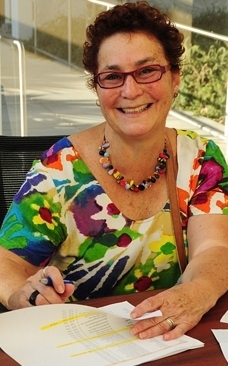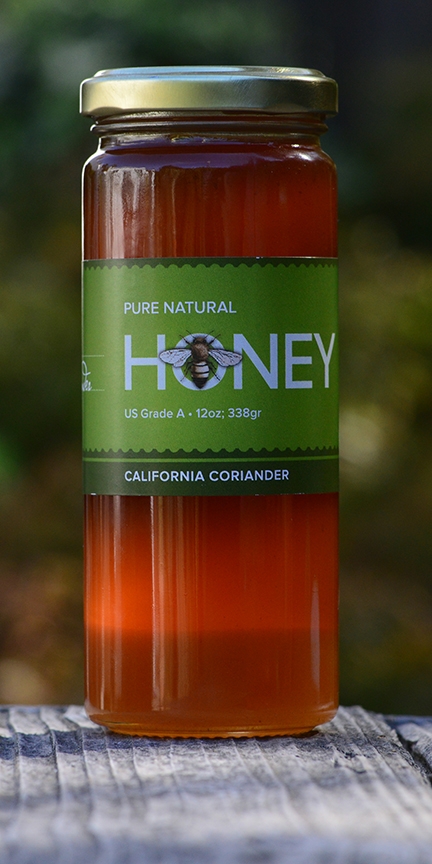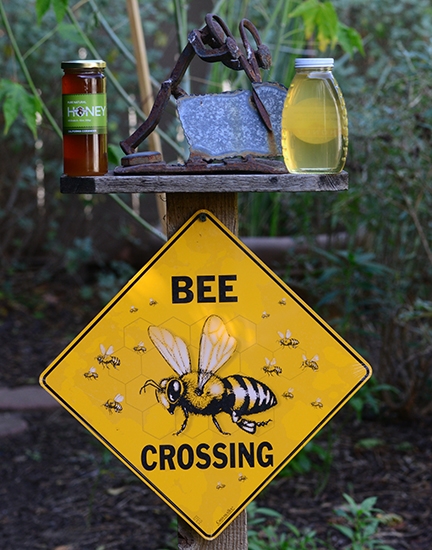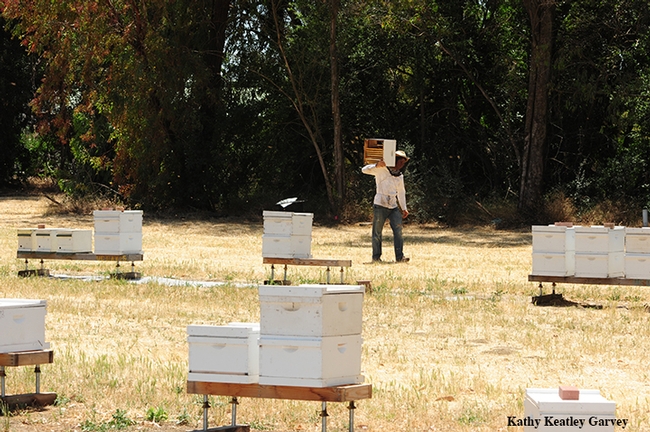
She's right. Just as birds maintain a "home tweet home," honey bees and honey connoisseurs insist on a "home sweet home."
But how much do we know about honey? We know that European colonists brought the honey bee to Jamestown in 1622 and we know that a San Jose beekeeper brought the honey bee to California in 1853.
Harris, quoting from the National Honey Board, defined honey as "the substance made when the nectar and sweet deposits from plants are gathered, modified and stored in the honeycomb by honey bees."
She went on to say that:
- A honey bee gathers nectar from an assortment of flowers. Nectar is very high moisture--about 80 percent water.
- The worker (bee) drinks the nectar through her proboscis, eventually filling up her crop or honey sac.
- Once the sac is full, she will return to the hive. While in flight, the nectar is mixed with the enzyme invertase.
- Upon her return, the forager gives her nectar to the house bee.
- The bee actively engaged in processing nectar pumps out the contents of her honey sac into a flat drop on the underside of her proboscis. She draws it up and repeats the process for about 15 to 20 minutes.

The Honey and Pollination Center is hosting a Honey Sensory Experience Friday and Saturday, Nov. 10-11 at UC Davis so you can learn all about honey, taste honey varietals from all over the world, and hear what researchers are doing.
The all-day course, to take place in the Robert Mondavi Institute for Wine and Food Science's Sensory Building on Old Davis Road, is for beekeepers, bakers, mead makers, honey lovers, packers, importers, professional buyers, honey producers, and "anyone who wants to gain expertise in the aroma of honey analysis," said Harris. "Over two days, expert teachers will guide participants through a unique tasting and educational odyssey."
For the past nine months, the center has been working with a team of sensory experts and trained tasters in the sensory lab in the UC Davis Department of Food Science and Technology. The panel analyzed the flavor, aroma, color, pollen and nutrition of three varietal honeys with samples produced across the nation. The center's goal is to create a description of each varietal honey's unique characteristics.
“We have about 300 varietal honeys here in the United States,” Harris pointed out. “Many aren't produced each year. And some years actually have a better crop than others. Our center's goal is to help consumers understand what each varietal honey should really taste like.”
Well-known varietals include orange blossom and clover honeys, although these are rarely pure varietals, Harris said.
“According to current honey labeling laws, the varietal listed on the label need only be the predominant floral source. Simply, a blended honey of 23 percent alfalfa, 25 percent wildflower and 25 percent cotton with 27 percent orange blossom can be labeled ‘Orange Blossom Honey.' Swap out the orange blossom for clover and you have a new varietal.”

The Honey and Pollination Center, at the forefront of honey sensory research, developed the first-ever Honey Flavor and Aroma Wheel. The wheel has been featured on National Public Radio, at the Smithsonian, and at tastings and specialty food conferences across the country.
In addition to Harris, the presenters will include Orietta Gianjorio, member of the Italian Register of Experts in the Sensory Analysis of Honey; Hanne Sivertsen, sensory researcher, UC Davis Department of Food Science and Technology; Amy Myrdal Miller, certified nutritionist and owner of Farmer's Daughter Consulting, Sacramento; Joyce Schlacter, certified quality control specialist and director of food safety and quality, Smitty Honey, Iowa; chef Mani Niall, owner of Sweet Bar Bakery, Oakland, Calif. and Extension apiculturist Elina Lastro Niño, based in the UC Davis Department of Entomology and Nematology.
Niall, known as “Baker to the Stars,” served as a chef to Michael Jackson and a chef for the National Honey Board in the 1990s. He is the author of the book, Covered in Honey: The Amazing Flavors of Varietal Honey.
Miller, a UC Davis graduate, is an “amazing nutritionist,” Harris said. She is a farmer's daughter, a highly regarded public speaker, published author, and founder and president of Farmer's Daughter Consulting, a privately-held agriculture, food, and culinary communications firm.
The course, which includes breakfast and lunch each day, is $625. To access the agenda and to register, see http://honey.ucdavis.edu/events/honey-sensory-experience-an-introduction.
Attached Images:

